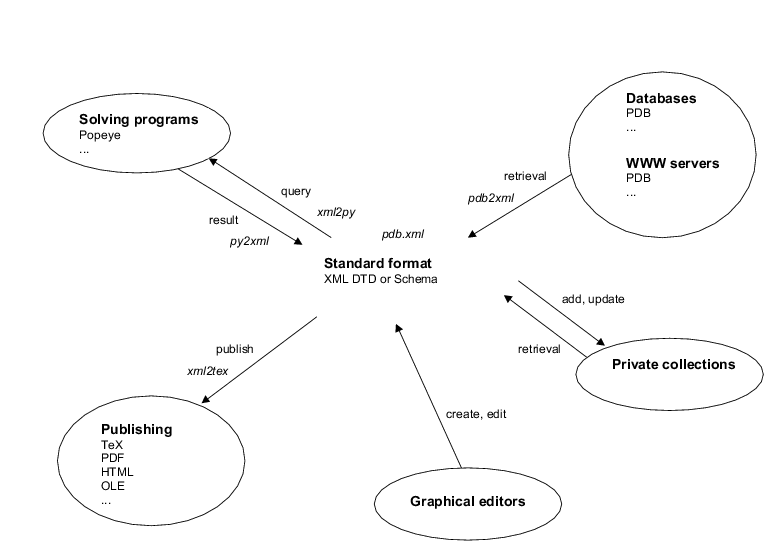
(The set of five types is very likely not to be exhaustive, but that doesn't affect the usefulness of a standard format.)
The world of chess problems is a world of a lot of enthusiasm and few (read: no) money. There is a lot of computer support for different tasks that chess problemists face, but almost everything was created by a few who volunteered to offer some service to the community, stealing themselves the time for other, more interesting things like composing.
Currently, all these programs cooperate rather poorly, mainly because each uses a different language for representing chess problems. A common, proven format for representing chess problems would help us leverage the efforts already made and maybe better focus efforts to be made in the future. Standardization of such a format by the PCCC would give the format the official touch that might induce people to spend their time in supporting it or to prefer it to alternatives.
The goal of the project is thus to develop a standard format for the representation of chess problems.
In a talk to the Sub-committee for Computer Matters of the
PCCC
in 2002, I identified five types of software dealing with chess
problems that might benefit from a standard format:

(The set of five types is very likely not to be exhaustive, but that
doesn't affect the usefulness of a standard format.)
The arrows in the picture depict how members of these software types would use a standard format; the non-italic arrow legends name possible operations.
It is my personal opinion that the most important contributing factors to the success of a project such as this one are (in the order given):
Thus, when I first felt enthusiastic about developing such a standard, I took the largest set of relevant data available (the PDB) and looked for a way to represent a maximum of information about a maximum number of problems.
The result (roughly at the end of 2003) was an XML file containing representations of 50601 helpmate problems; there are some duplicates, but this is slightly above 80% of the currently 71954 helpmates in the PDB.
In 2006, after the PCCC meeting in Wageningen, a small task force restarted the efforts; the result is described below.
A proposal will be submitted to the PCCC to
Over in the download area, two "packages" can be downloaded:
There is also a documentation by example of the Standard Format.
Finally, here is a fairly extensive reference document covering the elements of the Standard Format.